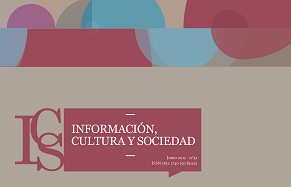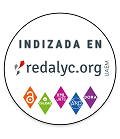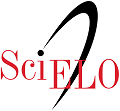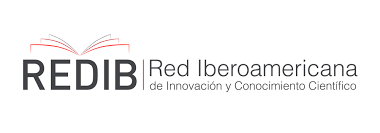Preferences of researchers and institutional/disciplinary practices in the dissemination and socialization of research results
Abstract
The objective of this work is to contribute to the knowledge of the practices and preferences of university researchers when they have to disseminate and socialize their publications in open access institutional repositories and academic social networks. This study is based on the premise that this phenomenon is influenced both by discipline and by institutional belonging. With a bibliometric-scientometric approach, the presence of the academic community and the volume and temporal coverage of its production deposited in institutional repositories (RIS) and the academic social network ResearchGate (RG) are studied. The case of university researchers from three faculties of an Argentine public university is studied, characterizing the population according to gender, age group, academic degree, and category formalized within the research system. It is concluded that there is a higher presence of the academic community in the repositories than in the social network, although the average of documents per university researcher is higher in the latter. The community of the faculties of Exact Sciences and Natural Sciences have a high presence in RG, unlike those in Humanities and Social Sciences. There are more women than men in the different platforms, in contrast to what happens with the average number of documents per university researcher, which is also higher the higher the age, the researcher category, and the academic degree achieved. Temporary coverage and current production are higher in RG than in the RIS, in addition to a relationship between the age of the documents and the age group of the population.Downloads
References
Abramo, G.; C.A. D´Angelo y A. Caprasecca. 2009. Gender differences in research productivity: a bibliometric analysis of the Italian academic system. En Scientometrics. Vol.79, no. 3, 517-539.
Alba-Ruiz, Rubén; Trinidad Bullejos de la Higuera; Clara Bermudez-Tamayo; Manuel Colmenero-Ruiz; Carmen Martínez Valero; Manuela Expósito Ruiz y M. M. Rodríguez del Aguila. 2011. Estrategias de difusión de la actividad investigadora en un centro hospitalario. Trabajo presentado a las XIV Jornadas Nacionales de Información y Documentación en Ciencias de la Salud, realizado en Cádiz del 13 al 15 de abril de 2011. http://eprints.rclis.org/15935/ [Consulta: 19 agosto 2017].
Bik, H. M. y M. C. Goldstein. 2013. An introduction to social media for scientists. En PlosBiology. Vol. 1, no. 4., e1001535. https://doi.org/10.1371/journal.pbio.1001535 [Consulta: 15 septiembre 2017].
Boeris, Claudia y Sandra Miguel. 2016. Perspectivas de la aplicación de altmetrías en el análisis de los perfiles de investigadores del IAR. Trabajo presentado al Workshop Científico & Tecnológico Radioastronomía en la Argentina. 50 años del IAR, realizado en La Plata del 28 al 29 de marzo de 2016.
Borgman, Christine. 1989. Bibliometrics and scholarly communication: editor`s introduction. En Communication Research. Vol. 16, no. 4, 583-599.
Björk, Bo-Christer. 2007. A model of scientific communication as a global distributed information system. En Información Research. Vol. 12, no. 2. http://www.informationr.net/ir/12-2/paper307.html [Consulta: 20 noviembre 2016].
Bongiovani, Paola y Silvia Nakano. 2010. El Sistema Nacional de Repositorios Digitales (SNRD): la experiencia de articulación y coordinación institucional de los repositorios digitales en ciencia y tecnología. Trabajo presentado a la Jornada Virtual de Acceso Abierto Argentina, realizada en Buenos Aires el 21 de octubre de 2010. http://www.caicyt-conicet.gov.ar/micrositios/accesoabierto/wp-content/uploads/2016/06/Ponencia-Bongiovanni-Nakano.pdf [Consulta: 15 de agosto de 2017].
Borrego, Ángel. 2016. Measuring compliance with a spanish government open access mandate. En Journal of the Association for Information Science and Technology. Vol. 67, no. 4, 757–764. https://doi.org/10.1002/asi.23422 .
BOAI. Budapest Open Access Initiative. 2002. Budapest: Open Society Institute. http://www.budapestopenaccessinitiative.org/read [Consulta: 20 noviembre 2017].
BOAI. Budapest Open Access Initiative 2015. Budapest: Open Society Institute. http://www.budapestopenaccessinitiative.org/boai15-1[Consulta: 20 noviembre 2017].
Campos-Freire, F. y J. Rúas-Araújo. 2016. Uso de las redes sociales digitales profesionales y científicas: el caso de las tres universidades gallegas. En El Profesional de la Información. Vol. 25, no. 3, 431-440. http://dx.doi.org/10.3145/epi.2016.may.13 [Consulta: 7 abril 2017].
Campos-Freire, F.; D. Rivera Rogel y C. Rodríguez. 2014. La presencia e impacto de las universidades de los países andinos en las redes sociales digitales. En Revista Latina de Comunicación Social, Vol. 69, 571-592. https://doi.org/10.4185/RLCS-2014-1025.
Clark, B. 1996. El sistema de educación superior. Una visión comparativa de la organización académica. México: Nueva Imagen.
Dafonte-Gómez, Alberto; María Isabel Míguez-González e Iván Puentes-Rivera. 2015. Redes sociales académicas: presencia y actividad en Academia.edu y ResearchGate de los investigadores en comunicación de las universidades gallegas. Trabajo presentado a 10th Iberian Conferenceon Information Systems and Technologies (CISTI) realizado en Aveiro del 17 al 20 de Junio de 2015.
Echavarría Ramírez, Andrés Felipe. 2010. Redes sociales académicas… el boom de la Web 2.0 académica. En Blog de la Universidad ICESI. http://www.icesi.edu.co/blogs/egatic/tag/redes-sociales-academicas/ [Consulta: 15 marzo 2017].
Enríquez, Silvia C.; Sandra Gargiulo; Enrique Verdecia Carballo y Norberto Wenk. 2015. Circulación de textos científicos en sitios web académicos no institucionales. Trabajo presentado a las III Jornadas de TIC e Innovación en el Aula, realizado en La Plata el 7 de septiembre de 2015. http://hdl.handle.net/10915/48652[Consulta: 20 agosto 2017].
Fernández, Laura y Corina Graciano. 2007. Producción y difusión del conocimiento en la Facultad de Ciencias Naturales de la Universidad Nacional de La Plata - Estrategias de posicionamiento de los grupos. Trabajo presentado al V Encuentro Nacional y II Latinoamericano: la Universidad como objeto de investigación, realizado en Tandil del 30 de agosto al 1 de septiembre de 2007. Universidad Nacional del Centro de la Provincia de Buenos Aires.
Friedberg, Erhard y Christine Musselin. 1996. La noción del sistema universitario y sus implicancias para el estudio de las universidades. México: Universidad Futura.
Garvey, William D. y Belver C. Griffith. 1972. Communication and information processing within scientific disciplines: Empirical findings for Psychology. En Information Storage and Retrieval. Vol. 8, no. 3, 123-136.
González Díaz, Cristina; Mar Iglesias-García y Luis Codina. 2015. Presencia de las universidades españolas en las redes sociales digitales científicas: caso de los estudios de comunicación. En El Profesional de la Información. Vol. 24, no. 5, 640-647.
Hurd, Julie M. 2000. The transformation of scientific communication: a model for 2020. En Journal of the Association for Information Science and Technology. Vol. 51, no. 14, 1279–1283.
Kretschmer, Hildrun; Alexander Pudovkin y Johannes Stegmann. 2012. Research evaluation. Part II: gender effects of evaluation: are men more productive and more cited than women? En Scientometrics. Vol. 93, no. 1, 17-30.
Kullman, L. 2014. The effect of Open Access on citation rates of self-archived Articles at Chalmers. En IATUL 2014 – Annual Conference (35º: 2 al 5 de junio de 2014: Espoo). Trabajos presentados. Espoo, Finland: Aalto University. http://publications.lib.chalmers.se/records/fulltext/198512/local_198512.pdf [Consulta: 15 septiembre 2017].
Liu, Ziming. 2003. Trends in transforming scholarly communication and their implications. En Information Proccessing and Management. Vol. 39, no. 6, 889–898.
Lovett, Julia A.; Andrée J. Rathemacher; Divana Boukari y Corey Lang. 2017. Institutional Repositories and Academic Social Networks: Competition or Complement? A study of Open Access policy compliance vs. ResearchGate participation. En Journal of Librarianship and Scholarly Communication. No. 5 (General Issue). eP2183 https//doi.org/10.7710/2162-3309.2183[Consulta: 20 octubre 2017].
Miguel, Sandra; Mónica Hidalgo; Edgardo Stubbs; Paula Posadas y Edgardo Ortiz Jauréguizar. 2013. Estudio bibliométrico de género en la paleontología de vertebrados. El caso de la revista argentina Ameghiniana (1957-2011). En Investigación Bibliotecológica. Vol. 27, no. 61, 133-155.
Mikki, S.; M. Zygmuntowska; Ø. L. Gjesdal y H. A. Al Ruwehy. 2015. Digital presence of norwegian scholars on academic network sites—Where and Who Are They? En PLoSONE. Vol. 10, no. 11, e0142709. https://doi.org/10.1371/journal.pone.0142709 [Consulta: 20 octubre 2017].
Molfino, María del Rosario y Claudia González. 2012. Acceso Abierto a la literatura científica y a los datos de investigación: escenario de oportunidad para Latinoamérica. Trabajo presentado en II ETHICOMP Latinoamérica, realizado en Bahía Blanca del 8 al 12 de octubre de 2012. http://www.memoria.fahce.unlp.edu.ar/trab_eventos/ev.2971/ev.2971.pdf [Consulta: 20 octubre 2017].
Morrison, Heather. 2016. Dramatic growth of Open Access. En The Imaginary Journal of Poetic Economics. http://poeticeconomics.blogspot.com.ar/2016/12/dramatic-growth-of-open-access-december.html [Consulta: 20 octubre 2017]
Niyazov, Y.; C. Vogel; R. Price; B. Lund; D. Judd; A. Akil; M. Mortonson; J. Schwartzman y M. Shron. 2016. Open Access meets discoverability: citation to articles posted to Academia.edu. En Plos ONE. Vol. 11, no. 2, e0148257 Doi: https://doi.org/10.1371/journal.pome.0148257 [Consulta: 15 septiembre 2017].
Ortega, José Luis. 2015. Relationship between altmetric and bibliometric indicators across academic social sites: The case of CSIC’s members. En Journal of Informetrics, Vol. 9, 39-49.
Pinfield, S.; J. Salter; P. A. Bath; B. Hubbard; P. Millington; J. H. S. Anders y A. Hussain. 2014. Open-access repositories worldwide, 2005-2012: Past growth, current characteristics and future possibilities. En Journal of the American Society for Information Science and Technology. Vol. 65, no. 12, 2404–2421.
Puentes-Rivera, Iván; Sabela Direito-Rebollal y Diana Lago Vázquez. 2015. Las redes sociales científicas: presencia y actividad de los investigadores de comunicación de las universidades de Portugal en Academia.edu y ResearchGate.net. En La pantalla Insomne. Universidad de La Laguna. http://www.revistalatinacs.org/15SLCS/2015_libro/137_Puentes.pdf[Consulta: 15 octubre 2017].
Russell Barnard, Jane. 2007. La comunicación, publicación y validación de la ciencia: Nuevos enfoques y retos. En: Tópicos de investigación en Bibliotecología y sobre la Información. Edición conmemorativa de los XXV años del Centro Universitario de Investigaciones Bibliotecológicas. Vol. I. México: Nueva Visión.
Santana Arroyo, Sonia. 2010. Redes de intercambio de información científica y académica entre los profesionales, en el contexto de la Web 2.0. En Revista Cubana de Información en Ciencias de la Salud. Vol. 21, no. 3 http://www.acimed.sld.cu/index.php/acimed/article/view/98 [Consulta: 12 diciembre 2017].
Thelwall, Mike y Kayvan Kousha. 2017. ResearchGate articles: age, discipline, audience size and impact. En Journal of the Association for Information Science and Technology. Vol. 68, no. 2, 468-479. Doi: https://doi.org/10.1002/asi.23675
Torres-Salinas, Daniel; Ana Muñoz-Muñoz y Evaristo Jiménez-Contreras. 2011. Análisis bibliométrico de la situación de las mujeres investigadoras de Ciencias Sociales y Jurídicas en España. En Revista Española de Documentación Científica. Vol. 34, no. 1, 11-28. http://redc.revistas.csic.es/index.php/redc/article/view/680/754[Consulta: 3 noviembre 2017].
Van Noorden, R. 2014. Online collaboration: Scientists and the social network. En Nature. Vol. 512, no. 7513 http://www.nature.com/news/online-collaboration-scientists-and-the-social-network-1.15711[Consulta: 4 agosto 2016].
Xia, J.; S. B. Gilchrist; N. X. P. Smith; J. A. Kingery; J. R. Radecki; M. L. Wilhelm; K. C. Harrison; M. L. Ashby y J. Alyson. 2012. A Review of Open Access self-archiving mandate policies. En Libraries and the Academy. Vol. 12, no. 1, 85–102.
Authors publishing in this journal acknowledge the conditions below:
- Authors retain the copyright of their work while they transfer the right of the first publishing to the journal, under the Creative Commons Attribution-ShareAlike 4.0 International (CC BY-SA 4.0) Licence, which allows third parties to reproduce them under the condition that express mention is given to the author and to its original publication in the journal.
- Authors may enter into other contractual and independent arrangements for the non-exclusive distribution of the version of the article published in this journal (for instance, it can be published in an institutional repository or in a book). In any case, an express mention should be given to its first publication in the journal.
- It is permitted and encouraged to publish online the articles (for example, on institutional or personal pages).


























